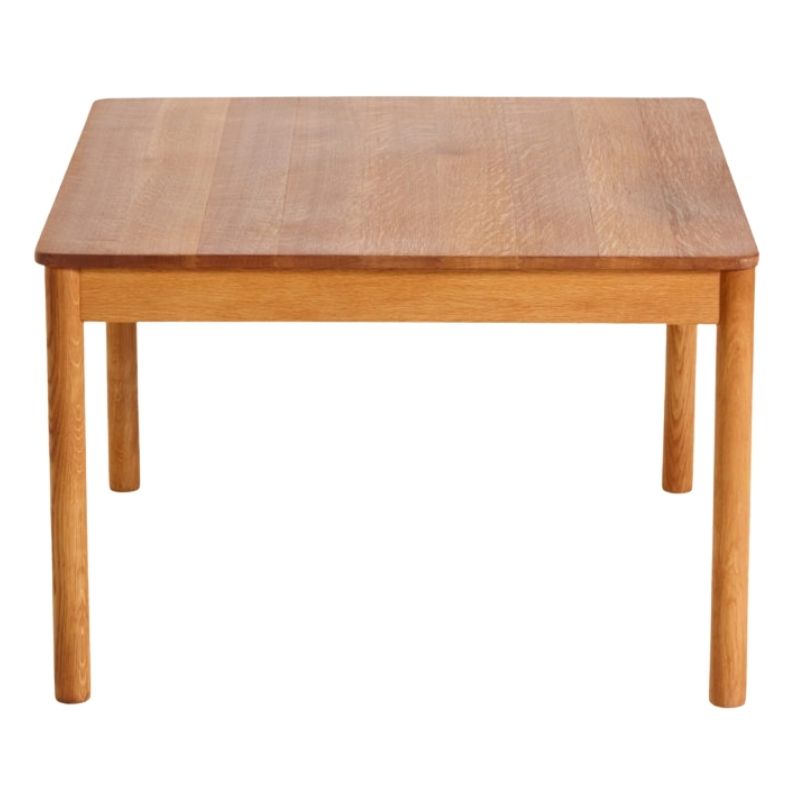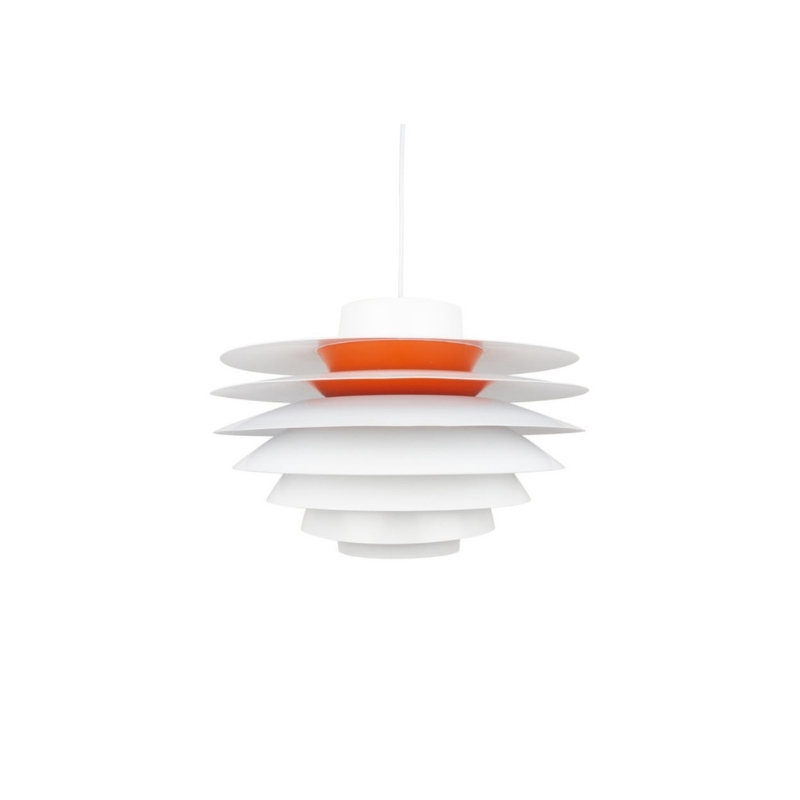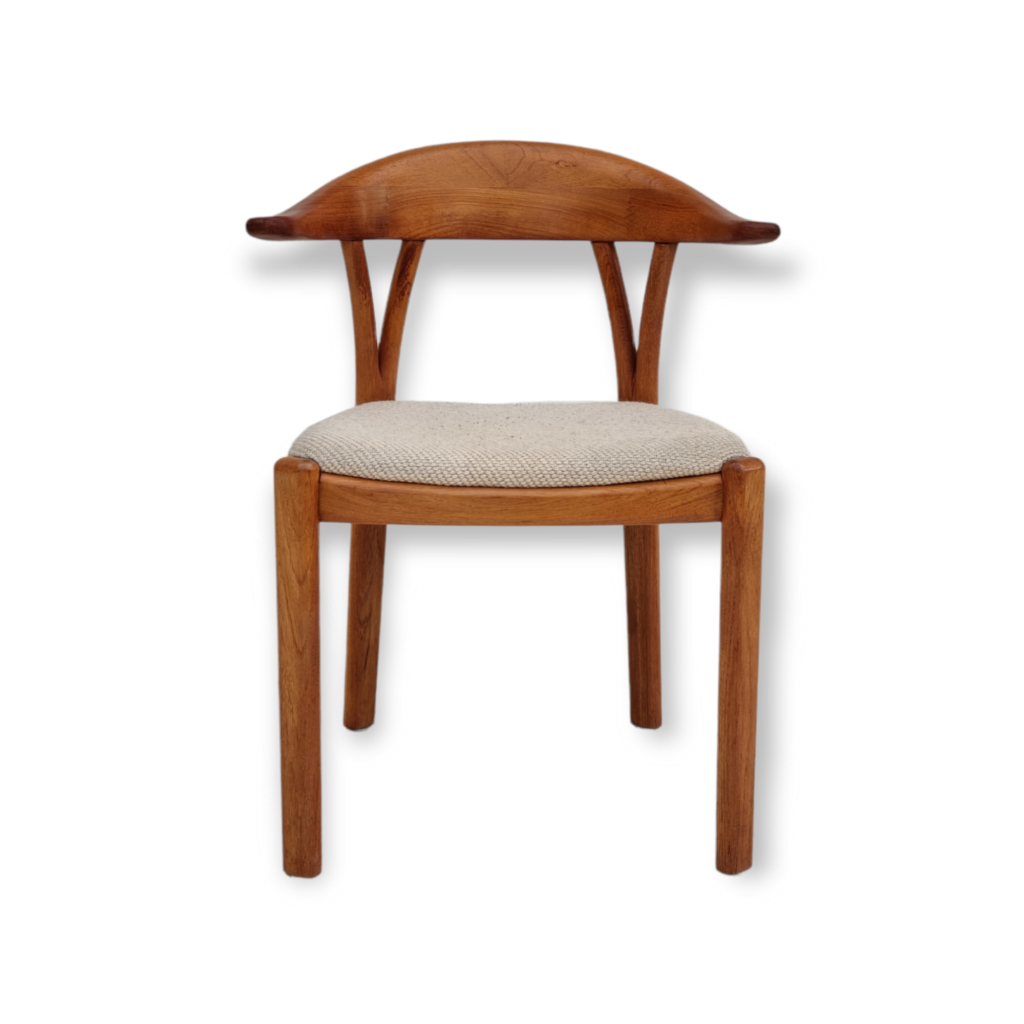I have a solid teak Danish table with some surface wear -- scratches and a few darker spots, no sun damage, and nothing too horrible, but it's far from perfect. I am unclear as to what constitutes "patina" and may be considered normal signs of age, versus what constitutes damage and ought to be fixed. Is this just a matter of taste?
Aside from this,there are also some areas that feel slightly sticky, as well as some places which, in raking light, appear different from the rest of the table, as if finish is pooling up in those spots. I assume this should be taken care of, but I'm not sure exactly how. You can see this a bit in the last image.
Should I use some kind of mild soap and water to clean it? Or should I simply use fine steel wool and scrub it with teak oil? Or do I need to employ mineral spirits?
Were I to decide to try to remove the imperfections, what would I need to do before sanding? And what grade of sandpaper should I use? (I am certain it's solid wood.)
I've read a lot about what kind of finish to use and it seems as if some people suggest only teak oil, whereas others prefer something with wax added. I'm a bit confused and would love opinions.
In fact if anyone would like to give me a step-by-step idea of what they would do, that would be amazingly great!
Thank you very much for any advice.  <img class="wpforo-default-image-attach
<img class="wpforo-default-image-attach
Give it a good rub down
with mineral spirits, white spirits, or naphtha and lots of rags. Wear gloves and follow safety recommendations. When you're done, go over it again.
This should remove any sticky build up of wax, non-drying oils, and/or cleaning products from the surface without disturbing the aged finish or surface of the wood. Once dry, the table should feel dry and smooth. If it still feels sticky at this stage, you'll need to do some testing and, possibly, take it up a notch to a stronger solvent. But this would be unusual.
If it looks like there is a varnish (it doesn't in your photos), this would be the time to ID it, assess its condition, and decide whether or not to strip or treat it somehow.
Next, any rough spots can be judiciously and lightly sanded with fine paper using care not to sand through the darkened surface. I'd advise leaving scratches, dings and minor stains as evidence of age as long as they're smooth to the touch, more-or-less unobtrusive, and somewhat evenly dispersed. These are what I call "patina".
It doesn't appear from your photos that there is a film finish present, so you should be able to simply apply your favorite oil finish according to directions on the label for a classic Danish oiled teak surface.
It sounds like work and it is, but it's not at all tricky or difficult and the results are worth it.
Good luck!
I know you said you are certain it is solid
but in the third picture, why is there a line that looks like edge banding? (edge banding wouldn't be on a solid piece). And the grain in the second photo looks a bit veneer like
I am hopefully wrong, since photos can be very deceptive, but I am not completely convinced of its solidity on the visible evidence so far.
I appreciate your asking, Leif,
as I am no expert. I was actually able to learn something from studying this table, which I knew ahead of time to be solid. When I looked closely at it I could see that the center of the table consists of 3 bigger slabs of teak, and two thinner ones at the edges, whose grain pattern matches that on the bottom of the table. Also there is no book matching on the top, and you can see the grain running with the slabs on the side. All the other tables I've ever seen have been veneered, so this one was interesting to examine.
So thank you, Tktoo, for the detailed advice, which I really appreciate! Why would one start out, though, with mineral spirits? I was under the impression that one ought to start out with the gentlest stuff and only proceed to MS if nothing else worked. Why, for example, would you not try a mild soap? Can you tell from the pics that there's something tough on there, or is it just faster to use MS? Sorry for all the questions but I'm curious, and I want to learn how to make these assessments on my own... someday.
I'm actually looking forward to working on the table, though I am a bit intimidated!
Mineral spirits will take
off any wax that may have been applied along with most oily grime.
Yes, you could probably use a detergent solution, but they can be less effective on wax build up or oily grime and require thorough rinsing with water that can raise the grain in areas with thin or no finish whereas mineral spirits won't.
If it were a rare, high-value museum piece with an original finish, I might instead recommend taking it to an experienced conservator. Please pardon me if I made an incorrect assumption.
Really, as far as solvents go, mineral spirits are quite mild and the procedure for cleaning is so basic and non-invasive, it's virtually impossible to do the piece any harm.
My preferred oil finish
Is Formby's Tung Oil Finish. The low gloss variety. You just wipe it on with a rag. Usually applied 2 or 3 times. But you can repeat many times if you want to build up a finish. I usually take the finest steel wool or extremely fine sandpaper very lightly to the piece after the early coats have dried to knock down any bumps. And by very lightly I mean I cover an entire dining table in a minute with as little pressure as possible.
Oil finishes are nice though because it is really hard to screw them up, and really easy to fix it if you do, or more precisely: if you come up with an idea for how it will come out even better.
If you need any help, please contact us at – info@designaddict.com









